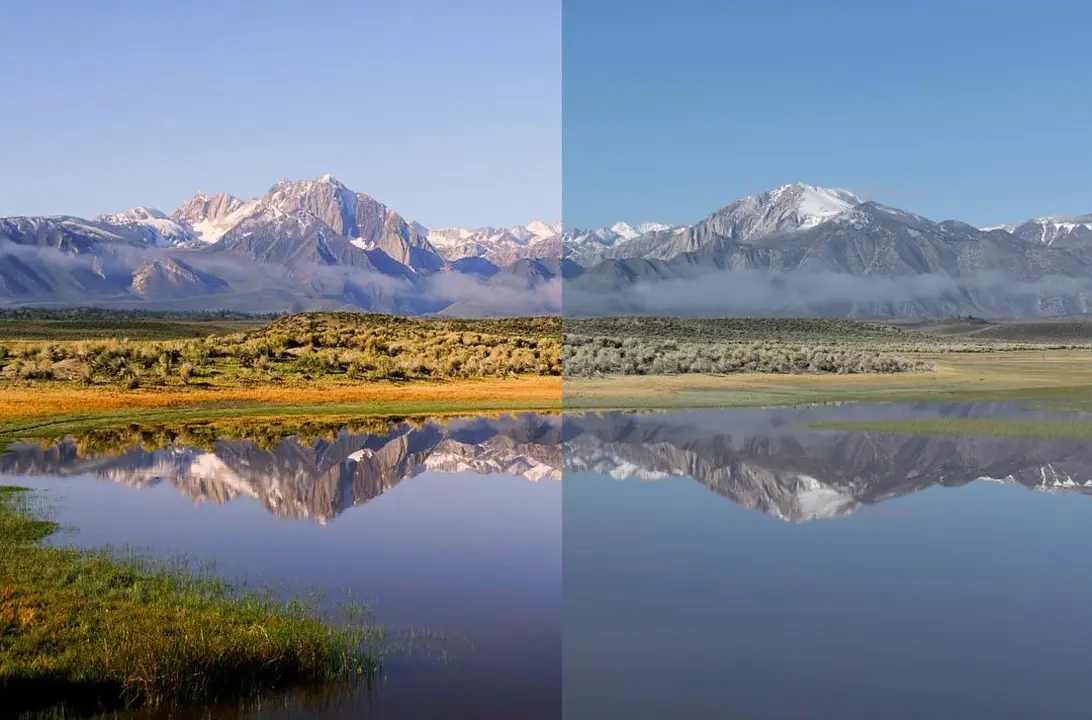How does a conventional camera and a digital camera differ?

Exploring the Pros and Cons of Conventional and Digital Cameras
When it comes to photography, there are a variety of options available to the photographer. One of the most common choices is between conventional and digital cameras. Both have their advantages and disadvantages, and it is important to understand the pros and cons of each before making a decision.
Conventional Cameras
Conventional cameras use film to capture images, as opposed to a digital camera which uses a sensor to capture images. The main advantage of a conventional camera is that film can often produce more dynamic photos, with finer details and more vibrant colors. They are also relatively inexpensive and easy to use. However, film can be difficult to store, and has a limited lifespan. Furthermore, it is not possible to view the image until it is developed, meaning that it can be difficult to make corrections and adjustments to the image.
Digital Cameras
Digital cameras are becoming increasingly popular due to their convenience and versatility. Digital cameras allow you to instantly review the image you have taken on the LCD screen and make adjustments if necessary. Digital cameras also allow you to store and share your images easily. However, digital cameras can be expensive, and the image quality can be affected by the quality of the sensor and the lens. Furthermore, digital cameras require batteries to operate, and the batteries can be expensive to replace.
Conclusion
Choosing between a conventional and a digital camera is a personal choice that will depend on the photographer's needs and preferences. It is important to consider the pros and cons of each type before making a decision. Both types of cameras have their advantages and disadvantages, and the right choice will depend on the photographer's intended use. Ultimately, the best way to ensure you make the right choice is to try out both types of cameras and see which one works best for you.
Understanding the Differences Between Conventional and Digital Cameras
When it comes to photography, there is a clear distinction between conventional and digital cameras. While both produce images, there are fundamental differences between the two that can have a big impact on the results you get.
Processing
One of the biggest differences between a conventional and digital camera is the way in which the images are processed. Conventional cameras use film to capture images, while digital cameras use digital sensors. Film needs to be developed in a darkroom while digital sensors can be processed quickly and easily on a computer.
Cost
Another difference between a conventional and digital camera is the cost. Conventional cameras require a substantial investment in film and processing, while digital cameras are generally much cheaper. Digital cameras can be used indefinitely without any additional cost, whereas conventional cameras require additional film and processing costs every time you take a photo.
Image Quality
The quality of the images produced by a conventional and digital camera can also vary. Conventional cameras use film, which has limited resolution and dynamic range, whereas digital cameras have much higher resolution and dynamic range. As a result, digital cameras are able to capture more detail and produce more vibrant images.
Versatility
Conventional cameras are limited in terms of their versatility, while digital cameras are much more flexible. Digital cameras can be used to shoot a variety of subjects, from landscapes to close-ups, while conventional cameras are limited to shooting still images. Digital cameras can also be used to capture video, while conventional cameras are limited to stills.
Speed
One of the biggest advantages of digital cameras is the speed with which they can take photos. Digital cameras are able to take multiple photos in quick succession, whereas conventional cameras require film to be loaded and reloaded for each shot. This can be a major advantage when shooting fast-moving subjects.
Storage
Finally, there is a difference in the way in which photos are stored. Conventional cameras require the use of traditional film, which needs to be stored in a dark, moisture-free environment. Digital cameras, on the other hand, store images digitally on memory cards or in the cloud, which is much more convenient.
Comparing Image Quality of Conventional and Digital Cameras
The quality of images captured by a camera is the most important factor when choosing a camera. This is especially true for photographers and videographers, who may be looking to capture certain details and emotions in their images. Conventional cameras, also known as film cameras, produce images on film, while digital cameras produce digital images on memory cards.
When it comes to image quality, digital cameras are superior to conventional cameras. The images produced by digital cameras are sharper and more detailed, due to the higher resolution of the images. Digital cameras also allow the photographer to make adjustments to the image before it is taken, such as adjusting the white balance, exposure, and ISO settings. This allows the image to be adjusted to the exact specifications that the photographer is looking for.
Conventional cameras, on the other hand, produce images with a lower resolution, which can result in images that are less sharp and detailed. Additionally, conventional cameras are limited in their ability to make adjustments to the image before it is taken, as the photographer has to rely on the film's exposure settings. This can make it difficult to capture certain details in the image.
The other major difference between conventional and digital cameras is the cost. Digital cameras are typically more expensive than conventional cameras, due to their higher resolution and ability to make adjustments to the image before it is taken. Additionally, digital cameras require memory cards to store the images, which can add to the cost of owning a digital camera.
In conclusion, digital cameras are superior to conventional cameras in terms of image quality, but they are typically more expensive. Those who are looking to take high-quality images should consider investing in a digital camera, while those who are looking for a more affordable option should consider a conventional camera.
How to Choose the Right Camera for Your Photography Needs
Choosing the right camera for your photography needs can be a bit overwhelming. There are so many options available out there, and it can be hard to know which one is the best for you. When it comes to cameras, there are two main types: digital and conventional.
Conventional Camera
A conventional camera is one that uses film to capture an image. When you take a picture with a conventional camera, you have to load it with a roll of film. This film can then be developed at a film processing lab, where prints can be made. Conventional cameras are often preferred by those who want to print out their photos, as they often produce higher quality images than digital cameras.
Digital Camera
A digital camera is one that stores the images electronically. When you take a picture with a digital camera, the image is sent to a memory card, which can then be transferred to a computer. Digital cameras are often preferred by those who want to post their photos online, as they allow for more editing options than conventional cameras.
Pros and Cons of Each
When it comes to deciding between a conventional camera and a digital camera, there are a few things to consider. Digital cameras are generally more user friendly and offer more editing options. However, they may not produce the same quality of images as a conventional camera. On the other hand, conventional cameras require more work and may not be able to edit photos as easily as a digital camera.
Which Camera is Right for You?
When it comes to choosing the right camera for your photography needs, it really depends on what you are looking to do with your photos. If you are looking to post them online or edit them, a digital camera is likely the best choice. However, if you are looking to print photos, a conventional camera is probably the way to go.
Evaluating The Cost Benefits of Conventional and Digital Cameras
Conventional and digital cameras are two of the most popular types of cameras on the market today. Both of these types of cameras have their own unique advantages and disadvantages. In order to determine which type of camera is best for you, it is important to evaluate the cost benefits of each option.
Conventional Cameras
Conventional cameras are generally less expensive than digital cameras, making them a great option for those who are on a budget. Conventional cameras tend to be more reliable and durable than digital cameras, so they can last for many years with proper care and maintenance. Additionally, the cost of film and development for conventional cameras is often lower than the costs associated with digital cameras.
Digital Cameras
Digital cameras offer a wide range of features and functions that are not available with conventional cameras. This includes the ability to instantly view images, as well as the ability to easily share photos with friends and family. Additionally, digital cameras are often more compact and lightweight, making them a great option for travel or outdoor photography. The cost of digital cameras can vary greatly, but generally speaking, they tend to be more expensive than conventional cameras.
Conclusion
When it comes to choosing between a conventional and digital camera, it is important to evaluate the cost benefits of each option. Conventional cameras are generally less expensive than digital cameras, and they tend to be more reliable and durable. Digital cameras offer a wide range of features and functions that are not available with conventional cameras, but they tend to be more expensive. Ultimately, the best camera for you will depend on your budget and your photography needs.
